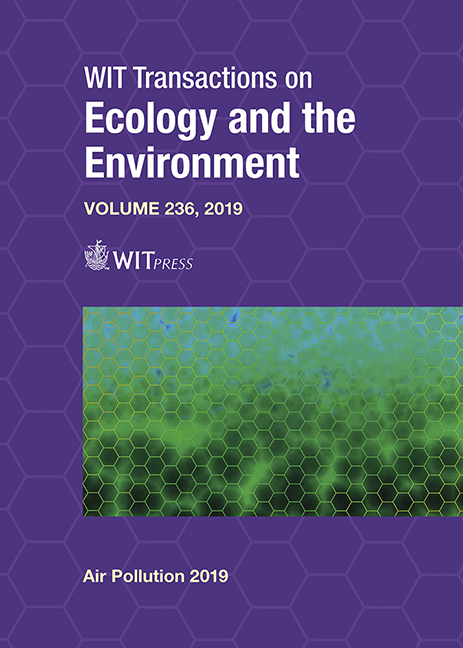CHARACTERIZATION OF ODOROUS EMISSIONS FROM A CIVIL WASTEWATER TREATMENT PLANT IN ITALY
Price
Free (open access)
Transaction
Volume
236
Pages
12
Page Range
159 - 170
Published
2019
Size
343 kb
Paper DOI
10.2495/AIR190161
Copyright
WIT Press
Author(s)
MARCO RAVINA, DEBORAH PANEPINTO, JHEYSON MEJIA ESTRADA, LUCA DE GIORGIO, PIETRO SALIZZONI, MARIA CHIARA ZANETTI, LORENZA MEUCCI
Abstract
The characterization and reduction of odour emissions represents an open debate among the scientific community. Odour nuisances are connected to a large number of substances, mostly detectable at low concentrations. Direct estimation of odour impacts through olfactometry is not always applicable, as this approach requires air sampling and a pool of trained panellists. Measuring the concentration of odorous substances provides support to the characterization of emission sources and the design of odour monitoring systems. Civil wastewater treatment plants (WWTPs) are known sources of odours. The objective of this project is the design and development of an integrated odour emission monitoring system at the Castiglione Torinese WWTP in Italy. In this paper, the preliminary characterization of the emission sources and the odour emitting components are presented. The characterization of the emission sources and tracers was obtained by mean of a number of site inspections and measurement campaigns held between 2017 and 2019. In the last campaign, held in January 2019, chemical odour tracers (H2S, NH3, VOC) and dynamic olfactometry measurements were performed simultaneously. The screening of VOC species through gas chromatograph/mass spectrometer analysis of air samples was also performed. Odour emitting components were ranked in terms of odour activity value (OAV). Results show that VOC is the only group of compounds that is always detectable on the site. NH3 and H2S may, in some cases, be present at considerable concentrations. Results of OAV calculations show that a number of VOCs are detected on the site with a high spatial and temporal frequency. Additional considerations are reported on the site-specific correlation between chemical species and odour measurements. This detailed characterization of the emission sources and tracers results in the design of the final integrated monitoring system, which will be based on continuous measurement of H2S, NH3 and VOC and advanced dispersion modelling.
Keywords
odour monitoring, wastewater treatment, odour dispersion modelling, odour activity value, odour tracers, olfactometry





